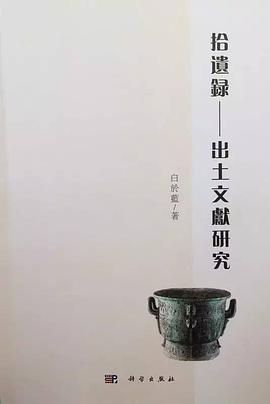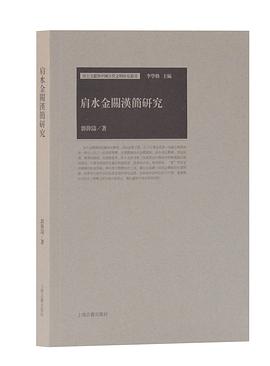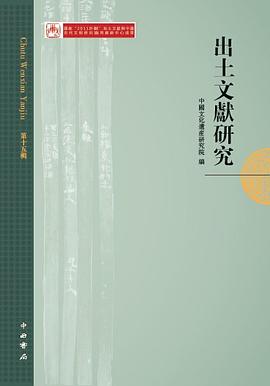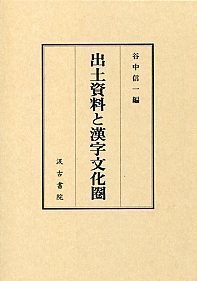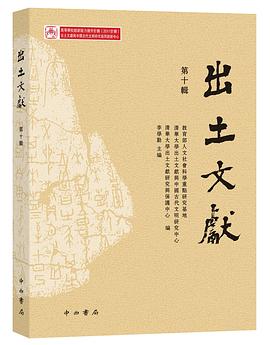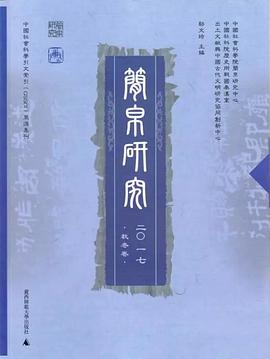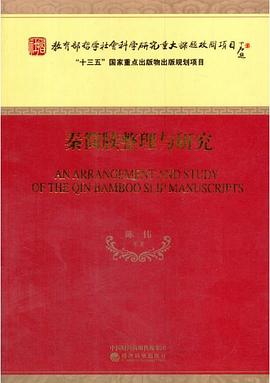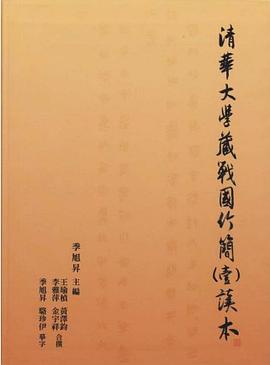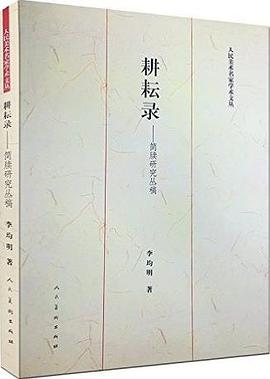
Books of Fate and Popular Culture in Early China pdf epub mobi txt 電子書 下載2025
- 齣土文獻
- 日書
- HdO
- 英文
- 工具書
- 夏德安
- MedievalChina
- EarlyModernChina
- 中國早期文化
- 命運
- 流行文化
- 書籍史
- 社會史
- 文化史
- 預言
- 占蔔
- 宗教信仰
- 文學

具體描述
Books of Fate and Popular Culture in Early China is a comprehensive introduction to the manuscripts known as daybooks, examples of which have been found in Warring States, Qin, and Han tombs (453 BCE–220 CE). Their main content concerns hemerology, or “knowledge of good and bad days.” Daybooks reveal the place of hemerology in daily life and are invaluable sources for the study of popular culture.
Eleven scholars have contributed chapters examining the daybooks from different perspectives, detailing their significance as manuscript-objects intended for everyday use and showing their connection to almanacs still popular in Chinese communities today as well as to hemerological literature in medieval Europe and ancient Babylon.
Contributors include: Marianne Bujard, László Sándor Chardonnens, Christopher Cullen, Donald Harper, Marc Kalinowski, Li Ling, Liu Lexian, Alasdair Livingstone, Richard Smith, Alain Thote, and Yan Changgui.
著者簡介
Donald Harper, Ph.D. (1983), is the Centennial Professor of Chinese Studies at the University of Chicago. His research and publications focus on newly discovered manuscripts and their significance for the history of religion, science, and technology in early China.
Marc Kalinowski, Ph.D. (1978), is Professor of Chinese Religion and Thought at the École Pratique des Hautes Études, Paris. He has published widely on correlative cosmology and mantic arts in transmitted texts and the manuscript culture of early and medieval China.
圖書目錄
Donald Harper and Marc Kalinowski
Hemerology
Technical Occult and Scientific Literature
Codicology of Daybook Manuscripts
Daybook Studies and Ancient Chinese Hemerology
Conventions Used in this Volume
Chinese Terms and Translations
Latin, Medieval Vernacular, and Cuneiform Sources
Chinese Conceptual Terms and Hemerological Terminology
1 Daybooks in Archaeological Context
Alain Thote
Daybooks in Tombs
The Four Tombs
Manuscripts in Tombs
Conclusion
2 Daybooks: A Type of Popular Hemerological Manual of the Warring States, Qin, and Han
Liu Lexian
Content and Defining Features of Daybooks
Overview of Fully Published Daybooks and Daybook-Related Manuscripts
Unpublished or Partially Published Hemerological Material
Comparison of Daybooks to Related Technical Literature in Excavated Manuscripts
Daybooks from the Perspective of the Bibliographic Treatise of the Book of Han
Daybooks and Later Hemerological Texts
Conclusion
3 Daybooks in the Context of Manuscript Culture and Popular Culture Studies
Donald Harper
Hemerology and Hemerological Literature through the Lens of Late Han Historiography
Makers and Users of Daybooks
The Form and Function of Daybook Manuscripts
Daybooks in Everyday Life
Conclusion
4 Hemerology and Prediction in the Daybooks: Ideas and Practices
Marc Kalinowski
Daily Activities and Life Expectations in the Daybooks
Techniques and Systems
Conclusion
Supplement 4.1
Supplement 4.2
Supplement 4.3
Supplement 4.4
Supplement 4.5
5 Daybooks and the Spirit World
Yan Changgui
The Spirit World
Spirit Origin and Background: Explanation of the “Death Corpse-Ghost” Diagram
Expelling Demons and Spirits: Techniques of Exorcism in “Spellbinding”
Spirits in the Context of Hemerology
Conclusion
Supplement 5.1
6 The Zidanku Silk Manuscripts
Li Ling
Discovery of the Zidanku Silk Manuscripts and the History of Ownership
The Zidanku Silk Manuscripts: Physical Description and Contents
The Zidanku Silk Manuscripts and Ancient Chinese Hemerological Literature
Conclusion
7 Calendars and Calendar Making in Qin and Han Times
Christopher Cullen
Looking at a Calendar
Calculating the Calendar
Who Calculated the Calendar?
Conclusion
8 Daybooks in Qin and Han Religion
Marianne Bujard
The First Tiller Cult: Public and Private Rites
Local Cults of the Qin and Han
Private Rituals in the Daybooks
Conclusion
9 The Legacy of Daybooks in Late Imperial and Modern China
Richard Smith
Brief Overview of Calendars and Almanacs from the Tang through the Ming Dynasty
State-Sponsored Cosmology in the Qing
The State Calendar and Its Derivatives
Qing Dynasty Almanacs
Concluding Remarks
10 Hemerology in Medieval Europe
László Sándor Chardonnens
Hemerology and Daybooks
Hemerology and the Study of Time
Divination, Commemoration, and Natural Philosophy
Hemerological Practices
Conclusion
11 Babylonian Hemerologies and Menologies 408
Alasdair Livingstone
Research Background
The Babylonian Cultic Calendar
The Hemerologies
Use of the Hemerologies
Retrospect: A Scientific Experiment in Hemerology
Appendices
Appendix A: Survey of Excavated Daybooks, Daybook-Related Manuscripts, and Other Hemerological Material
Appendix B: Summary of Published Daybooks and Daybook-Related Manuscripts
Appendix C: Description of Select Hemerologies and Classificatory Systems in Daybooks
Bibliography
Plates
Index
· · · · · · (收起)
讀後感
評分
評分
評分
評分
用戶評價
相關圖書
本站所有內容均為互聯網搜索引擎提供的公開搜索信息,本站不存儲任何數據與內容,任何內容與數據均與本站無關,如有需要請聯繫相關搜索引擎包括但不限於百度,google,bing,sogou 等
© 2025 book.quotespace.org All Rights Reserved. 小美書屋 版权所有




